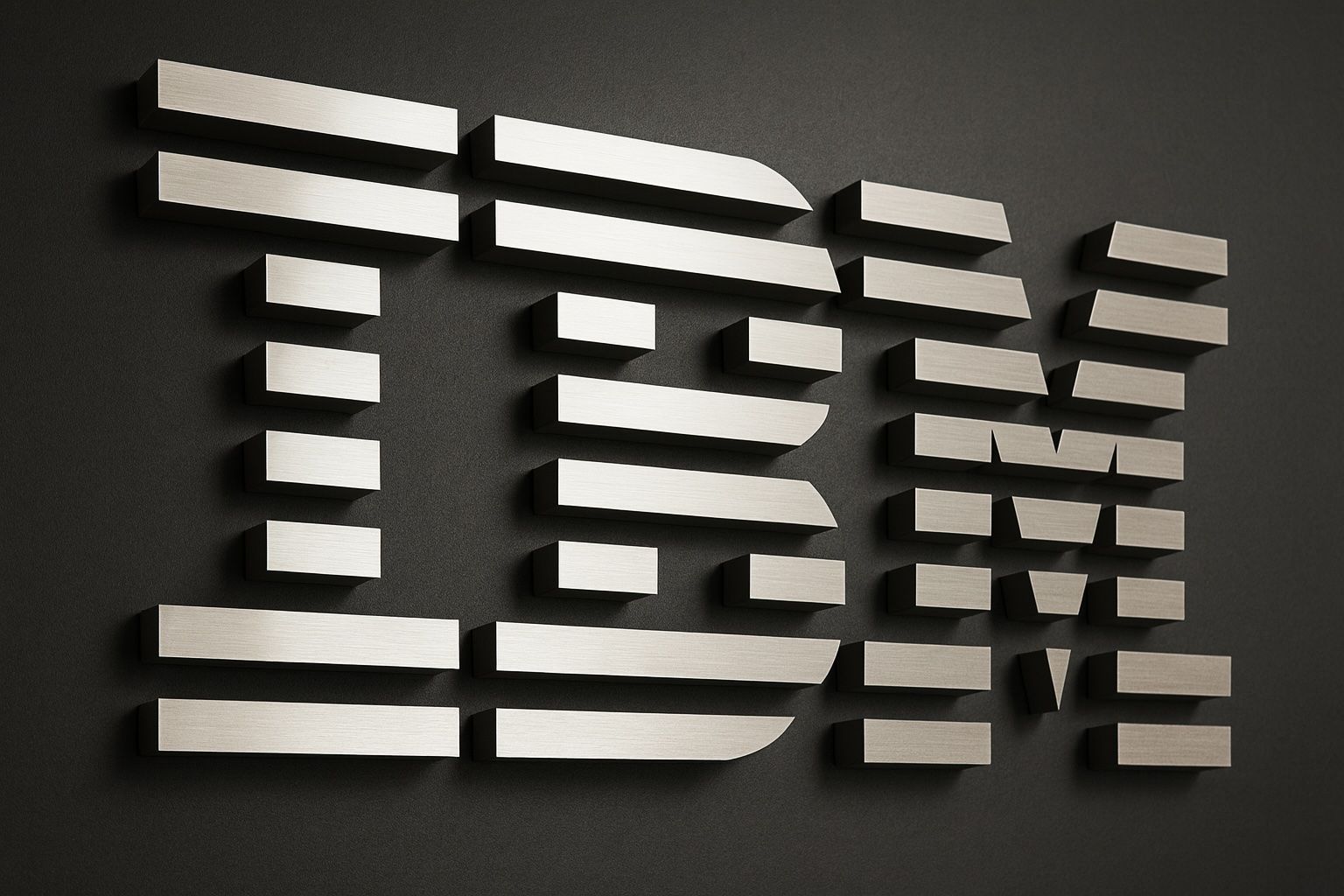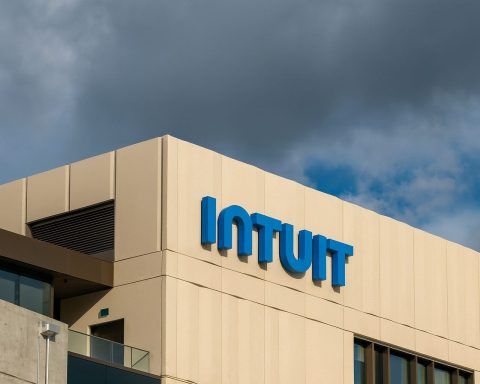- Layoffs Announced: IBM confirmed it will lay off a “low single-digit percentage” of its global workforce in the fourth quarter of 2025, amounting to thousands of jobs [1]. For context, even a 1% cut of IBM’s ~270,000 employees would mean roughly 2,700 jobs lost [2].
- Focus on Software & AI: The tech giant says the cuts are part of a strategic shift toward higher-growth businesses such as artificial intelligence consulting and software, as demand rises for cloud and AI services [3]. Under CEO Arvind Krishna, IBM has doubled down on its software division (bolstered by acquisitions like Red Hat and HashiCorp) to drive future growth [4].
- Impact on Workforce: IBM insists the reductions are a targeted “rebalancing.” While some U.S. employees will be affected, the company expects U.S. headcount to remain about flat year-over-year [5], implying most cuts will occur in other regions or older business units. Roles in areas like AI research, marketing, software engineering, and cloud infrastructure have been among those hit, according to employee posts on LinkedIn [6] [7].
- Broader Tech Layoff Trend: IBM’s move comes amid a broader wave of tech industry layoffs in 2025, even as companies invest in AI. In October, Amazon announced 14,000 corporate job cuts and Meta Platforms is cutting 600 positions in its AI division [8]. Many tech firms are trimming staff to boost efficiency and “embed AI” into operations, after years of hiring for experimental projects [9].
- Stock Market Reaction: IBM’s stock has climbed over 30% year-to-date on investor optimism around its AI and cloud initiatives [10] [11]. However, shares dipped ~1–2% after the layoff news, as the company also revealed a recent slowdown in its cloud software growth [12]. (IBM stock closed around $298 on Nov. 4, 2025, off its 52-week high of about $319 amid these developments.)
- Future Outlook: Despite short-term cuts, IBM’s outlook remains cautiously optimistic. The company slightly raised its full-year revenue forecast and expects its cloud/software unit growth to rebound to “mid-teens” percentages by 2026 [13] [14]. Analysts have a mixed view – the stock’s rich valuation means “little wiggle room” for setbacks, one investor noted [15]. Experts say the layoffs reflect IBM’s push to streamline operations and fund its AI ambitions for long-term competitiveness [16].
IBM’s AI-Era Layoffs and Strategic Shift
IBM’s decision to cut thousands of jobs by year-end comes at a paradoxical moment when artificial intelligence is booming across the tech sector. The company announced that a “low single-digit percentage” of its global workforce will be impacted in Q4 2025 [17]. In practice, this means on the order of three to eight thousand employees could lose their jobs in the coming weeks. An IBM spokesperson framed the move as a routine workforce adjustment, saying IBM continually reviews its staff mix and will “at times rebalance accordingly” to align with business priorities [18].
What’s driving the layoffs? IBM says it is streamlining in order to focus on high-growth areas – notably its software, cloud, and AI services businesses. “The technology supplier said it was shifting its focus to higher-growth businesses, including A.I. consulting and software,” The New York Times reported, summarizing IBM’s rationale [19].
Under CEO Arvind Krishna, IBM has honed in on expanding its cloud and AI offerings, especially through its Red Hat division and related acquisitions. IBM purchased open-source software leader Red Hat in 2019, and more recently it completed a $6.4 billion buyout of cloud-automation firm HashiCorp in 2025 – moves aimed at strengthening IBM’s hybrid cloud platform and AI capabilities. Krishna has been pushing the software unit to become IBM’s largest business segment, particularly as growth in the consulting arm has slowed due to clients’ economic jitters [20].
IBM’s bet on AI and software is largely a response to client demand for digital transformation. Companies worldwide are pouring money into cloud infrastructure and AI solutions – trends IBM wants to capitalize on. In fact, IBM’s newest mainframe computer is built with specialized AI chips and has seen “booming AI-driven demand” from financial industry customers, allowing those clients to adopt AI while keeping sensitive data in-house [21] [22]. However, this transformation also means IBM is deemphasizing or restructuring some older lines of business that don’t align with its AI-cloud focus. By pivoting to cutting-edge offerings, IBM is gradually phasing out certain legacy products and roles (such as those in traditional infrastructure management) that are growing obsolete in the AI era.
Layoff Details: Who Is Affected and Why
IBM has been tight-lipped publicly about exactly which jobs are on the chopping block, but early indications show a broad range of roles are affected. Employees in units ranging from artificial intelligence research and software engineering to marketing and cloud infrastructure have posted on LinkedIn about being laid off [23]. For example, a veteran IBM cloud infrastructure architect and a site reliability engineer were among those let go, as well as a marketing content writer and an AI-focused sales enablement architect [24] [25]. This suggests that even some teams working in AI and cloud were not spared – likely because IBM is refining those groups to emphasize more immediate, “measurable impact” projects rather than far-off experiments [26].
Notably, IBM has emphasized that its U.S. workforce will see little change despite the cuts. “While this may impact some U.S.-based roles, we anticipate that our U.S. employment will remain flat year over year,” the IBM spokesperson told CNBC [27]. IBM has around 270,000 employees worldwide, and keeping U.S. headcount flat implies the layoffs will largely hit overseas offices or specific global divisions. This could be because IBM is aligning talent with growth markets while trimming roles in slower units abroad. Analysts at TipRanks indeed characterized the move as “a targeted restructuring strategy rather than widespread job reductions” [28].
These layoffs also come on the heels of earlier quiet cutbacks by IBM. Earlier in 2025, IBM reportedly eliminated several thousand jobs across multiple business units – including SoftLayer (a cloud subsidiary acquired in 2013), Neudesic (a consulting firm bought in 2022), and its federal government services arm – as part of internal restructuring efforts [29]. Many industry observers see the current environment as giving companies cover to make such cuts. “The current environment is filled with uncertainty, and many companies may feel like this is the perfect opportunity to get rid of what some believe to be pandemic bloat,” said Kevin Thompson, CEO of 9i Capital Group [30]. In other words, tech firms that over-hired in the past few years are now seizing the chance to pull back. IBM is no exception. Thompson added that “some divisions are being downsized because they rely on older, outdated technologies that no longer fit the direction the industry is heading. Others are being restructured or folded into different parts of the company,” all in the drive to “do more with less” amid the AI revolution [31].
IBM’s layoffs are also part of a broader Big Tech belt-tightening wave. Despite solid profits in the tech sector, 2023–2025 has seen many large firms announce job cuts as they seek efficiency and respond to economic headwinds. IBM’s move comes just after Amazon revealed plans to lay off 14,000 employees in its corporate ranks and Meta Platforms cut about 600 staff from its AI research unit [32]. Even companies at the forefront of AI are trimming staff – often redistributing resources from experimental research groups to core product development. As Matt Bruno, an AI industry executive, observed, in recent years many companies built “large, experimental AI teams. Now the emphasis is shifting to precision and measurable impact,” with AI being directly integrated into business workflows [33]. In that context, IBM’s layoffs can be seen as a shift from maintaining expansive R&D teams toward a leaner approach focused on delivering AI solutions with clear outcomes.
Investor Reactions and Stock Price Impact
IBM’s announcement of job cuts has drawn close attention from investors and market analysts. The company’s stock had been on a tear for much of 2025, outperforming many peers as Wall Street grew bullish on IBM’s cloud and AI prospects. Up through late October, IBM shares had surged roughly 30–35% year-to-date [34] [35], fueled by optimism about its software expansion and AI initiatives. “IBM shares have climbed this year on investor enthusiasm for the software business,” Bloomberg noted – enthusiasm largely “fueled by acquired divisions Red Hat and HashiCorp” that have bolstered IBM’s cloud portfolio [36].
However, that strong stock performance also set high expectations. “The stock is priced to perfection,” warned Dan Morgan, a portfolio manager at Synovus Trust (an IBM investor) [37]. “There was little wiggle room for any metric to come up short.” Indeed, when IBM reported its third-quarter earnings in October, it slightly beat revenue and profit estimates and even raised its full-year forecast, yet investors zeroed in on one red flag: growth in IBM’s all-important cloud software segment had slowed. Sales in the hybrid cloud unit (primarily the Red Hat division) rose 14%, a deceleration from 16% growth in the prior quarter [38]. This “raised alarm bells” for those who hoped IBM’s high-margin software business would accelerate to justify its rich valuation [39] [40]. IBM’s stock tumbled about 5% in response to the Q3 results [41], demonstrating the market’s jitters about Big Blue’s cloud momentum.
The layoff news on November 4 added only slight further jitters. IBM’s shares fell around 1–2% on the day of the announcement [42]. Some of that dip likely reflected concern that even IBM sees the need to cut costs amid the “AI boom,” raising questions about demand or execution. However, many analysts view the layoffs as a prudent step to protect IBM’s profits. By trimming a few thousand jobs now, IBM can rein in expenses in slower-growing areas and refocus investment on its growth priorities.
Importantly, IBM’s overall financial outlook remains positive despite these cuts. In the Q3 earnings call, CEO Arvind Krishna said he expects the hybrid cloud/software division to return to mid-teens percentage growth by early 2026 [43], suggesting the recent slowdown may be temporary. The CFO also highlighted robust uptake of IBM’s AI-enabled mainframes and noted that IBM’s “AI book of business” (pipeline of AI-related deals) had grown to $9.5 billion, up $2 billion in just the last quarter [44]. On the back of these trends, IBM raised its 2025 revenue growth forecast slightly – now projecting over 5% annual growth (at constant currency), up from a prior outlook of “at least 5%” [45]. This indicates IBM’s management is cautiously optimistic that the company can hit its targets even after trimming some staff.
Market analysts have a mixed but generally hopeful view on IBM post-layoffs. Wall Street’s consensus rating on the stock is currently “Moderate Buy.” Many believe that IBM’s transformation toward software and AI will boost earnings in coming years, although a few observers remain skeptical given fierce competition and economic uncertainties. Notably, the average 12-month price target for IBM stock sits in the high-$280s to mid-$290s per share [46] – roughly where the stock trades now – implying that analysts see limited upside unless IBM can accelerate growth. In short, investors seem to expect steady, not spectacular, performance from IBM in the near term, and the company will need to execute well on its AI-centric strategy to prove the recent optimism is justified.
Experts: Efficiency Now, Growth Later
Industry experts say IBM’s layoffs underscore how even in an era of AI exuberance, tech giants are laser-focused on efficiency and profitability. Alex Beene, a financial literacy instructor who follows corporate trends, noted that it’s easy to point to artificial intelligence as a scapegoat for job cuts – but the reality is more nuanced. “While some will lay the blame on AI for these cuts, it’s difficult to say based on the initial announcement if that’s in fact the case. The workforce in the United States for IBM actually remains flat year-over-year despite the cuts,” Beene told Newsweek. “Still, this is the latest in a series of major corporate job reductions that will further stoke fears of how technological advancements are going to lead to more job losses.” [47] In other words, IBM’s layoffs may be driven more by classic business cycle and restructuring needs than by any single new technology – yet they feed into public anxiety about AI displacing workers.
From IBM’s perspective, the layoffs are about staying competitive in fast-changing tech markets. The company is over a century old, and throughout its history it has repeatedly reinvented itself – from punch-card machines to mainframes, from PCs to enterprise services, and now toward cloud and AI. The current restructuring appears aimed at ensuring IBM has “the right people with the right skills to do the work our clients need,” as an IBM spokesperson put it in an email to news outlet CRN [48]. In practical terms, that means investing in talent for cloud, AI, and other growth areas, while phasing out roles tied to declining products or more easily automated processes. IBM’s chief executive Krishna has been frank about the impact of AI on jobs: some roles (especially repetitive back-office tasks) will inevitably be automated, but new technology also creates new roles and demand for skills. In May 2023, Krishna even paused hiring for certain positions that could be replaced by AI, anticipating that 30% of non-customer-facing jobs might be automated in the next 5 years [49]. At the same time, he noted, AI’s productivity boost can lead to growth in other departments – for instance, IBM has increased hiring of software developers and salespeople to build and sell its AI solutions [50].
Kevin Thompson’s take is that IBM, like many peers, is trying to “do more with less” by leveraging AI. “The tech industry is accelerating toward AI adoption, and with that comes a belief in new efficiencies that allow companies to do more with less,” he said [51]. By cutting what IBM deems excess or low-value roles now, the company frees up resources to double down on the cutting-edge projects that could drive its future growth. The risk, of course, is in balancing cost cuts with innovation: IBM must ensure it’s not undermining morale or losing critical expertise with these layoffs, even as it trims fat.
Looking ahead, business experts say more tech layoffs could emerge as 2025 draws to a close. “As we move toward the end of the year, expect more layoff announcements,” Thompson noted, since year-end is when firms “evaluate performance, tighten operations, and adjust forecasts for the year ahead.” [52] In IBM’s case, the company appears to be getting its house in order early – making cuts now so that it can enter 2026 with a leaner organization focused on its highest-growth priorities. It’s a painful but perhaps necessary step to ensure that this 112-year-old tech icon can ride the next wave of innovation (from cloud to AI to quantum computing) and remain competitive. As uncomfortable as layoffs are, IBM and its investors are betting that a more efficient, AI-centric IBM will be better positioned for long-term growth once the current economic uncertainties subside.
Sources: CNBC [53] [54]; New York Times [55]; Bloomberg [56] [57]; Reuters [58] [59]; Newsweek [60] [61]; CRN [62] [63].
References
1. www.newsweek.com, 2. www.newsweek.com, 3. techrights.org, 4. www.tipranks.com, 5. www.newsweek.com, 6. www.crn.com, 7. www.crn.com, 8. www.newsweek.com, 9. www.newsweek.com, 10. gvwire.com, 11. www.tipranks.com, 12. gvwire.com, 13. www.reuters.com, 14. www.reuters.com, 15. www.reuters.com, 16. www.newsweek.com, 17. www.newsweek.com, 18. gvwire.com, 19. techrights.org, 20. www.tipranks.com, 21. www.reuters.com, 22. www.reuters.com, 23. www.crn.com, 24. www.crn.com, 25. www.crn.com, 26. www.newsweek.com, 27. www.newsweek.com, 28. www.tipranks.com, 29. www.crn.com, 30. www.newsweek.com, 31. www.newsweek.com, 32. www.newsweek.com, 33. www.newsweek.com, 34. gvwire.com, 35. www.reuters.com, 36. news.bloomberglaw.com, 37. www.reuters.com, 38. www.reuters.com, 39. gvwire.com, 40. www.reuters.com, 41. www.reuters.com, 42. gvwire.com, 43. www.reuters.com, 44. www.reuters.com, 45. www.reuters.com, 46. www.tipranks.com, 47. www.newsweek.com, 48. www.crn.com, 49. www.aljazeera.com, 50. www.crn.com, 51. www.newsweek.com, 52. www.newsweek.com, 53. www.newsweek.com, 54. www.newsweek.com, 55. techrights.org, 56. gvwire.com, 57. news.bloomberglaw.com, 58. gvwire.com, 59. www.reuters.com, 60. www.newsweek.com, 61. www.newsweek.com, 62. www.crn.com, 63. www.crn.com










